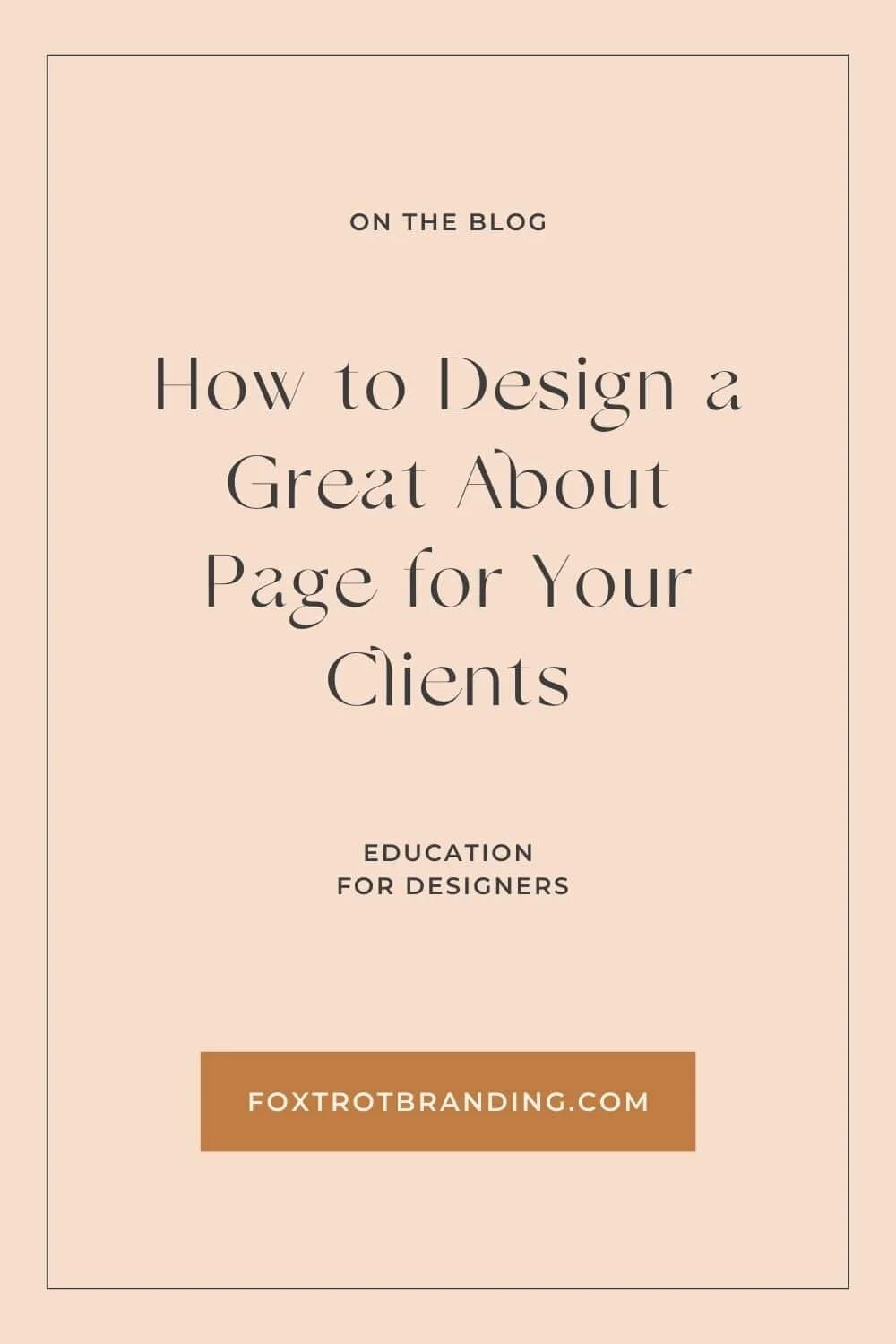How to Design a Great About Page for Your Clients
Looking for some tips on how to design a super compelling about page for your product or service-based client’s website??
Most business websites tend to have a very generic about page with a mission statement, long bios with lots of personal facts, a few photos, etc.
And these pages are fine, but are they really doing any work to convert customers? Nope! They are boring customers and leaving them at a dead end.
Every page on a website should be working hard to get the audience to take that big action step; for service-based businesses, it’s contacting and, for eCommerce businesses, it’s purchasing.
Designing a highly compelling about page for your clients is a great way to set yourself apart as a designer and ensure your web design service truly converts your client’s audience.
The three elements that make up compelling about pages are:
Client-Focused Content
A Skimmable Layout
Strong Calls to Action
So let’s dive into each of these elements and how you can create them yourself!
1. Client-Focused Content
Your website isn’t about you; it’s about what you can do for your CUSTOMER.
The purpose of a page should be about converting people to buy your product or service.
A big mistake many businesses make on their about page is blabbering on about themselves and how great they are; often they leave out the customer altogether.
Imagine having a conversation with someone that only wanted to talk about themselves. Chances are you wouldn’t stick around for too long.
When designing about pages, it is important to keep the problems and desires of your client’s audience at the forefront. Design their about page in a way that answers the audience’s questions, tells them how your client can solve their problems, and empathizes with how they feel.
You can and should design an about page with traditional elements like bios, personal facts, and photos, just keep the content related to what the audience wants to know in relation to the service or product.
For example, use bios to share relevant experience or authority in the company’s industry, not the person’s favorite food or that they love playing volleyball if those things aren’t relevant to their offering.
Use a fun facts area to state some special qualifications or qualities that will help their audience trust them or calm a fear the audience may have.
And, when it comes to photos, use “photos of success.” In other words, photos that feature the owners in action helping their audience see results or make the product they might be interested in.
Including imagery on your client’s site not only draws their attention but also helps them to better picture what their life would be with your client’s product or service.
Stock sites like Unsplash, Canva, and Pexels are all great resources to get imagery for your client’s site if they aren’t already provided for you to use.
2. A Skimmable Layout
People don’t read.
A fatal flaw to an about page or any website page is pasting in long paragraphs of text. We have to be honest with our clients and let them know that people just do not read the text in that way.
Huge chunks of text can be intimidating to read. When laying out your client’s page, break up those huge chunks of text into easy-to-read sections that are easy for their readers to digest and skim
Add in big and bold headers to your client's about page that state what your clients do and how they make people's lives better. That way, as people skim through their page, they will be able to easily identify how your client's service or product can help them in the first few seconds of reading.
And lastly, when it comes to creating a skimmable layout, keep your sections concise.
Our about page designs typically have 3-5 sections including an intro, an empathy section, a bio section, a facts section, a products section, etc. This will help audiences find the info they are looking for quickly.
3. Strong Calls To Action
You’re not being too pushy.
Many clients worry that they are being too “pushy” on their website. But, 99% of the time, small brands are not asking for the sale enough.
Repetitive, active calls to action tells your audience what you want them to do and also that you believe in your product or service Be sure to include a bold call to action in the upper right-hand corner of all website pages so that even if your client’s audience is ready to buy right now, it’ll be easy for them when they are ready to.
For that same reason, you should include call to action buttons throughout the about page, especially at the end of the page. You never want to leave a dead-end you should prompt audiences to that next step.
We hope these about page tips help feel more confident in your website design service and process!
We always say you shouldn’t have to figure everything out on your own; We believe you deserve the knowledge and resources needed to feel confident in your design process!
If you’re a new designer looking to grow in your skills, feel more confident in your designs, and start charging more for your services, check our Pro Design Process Course that teaches you everything you need to know about streamlining your process!
